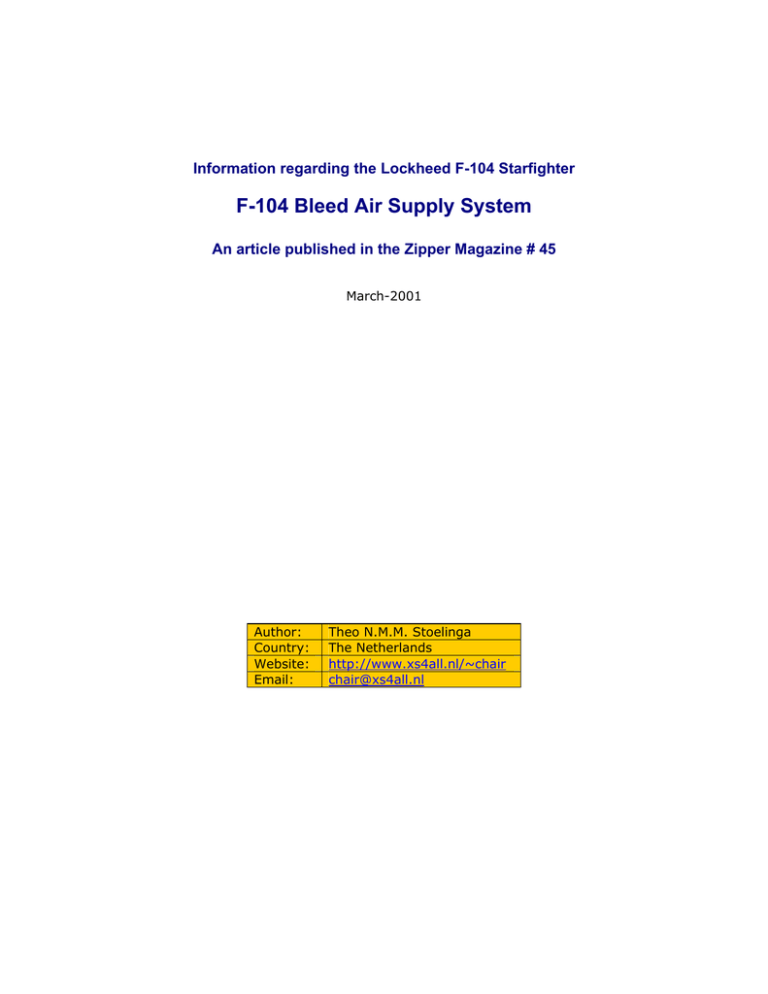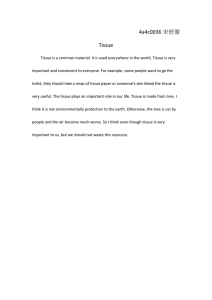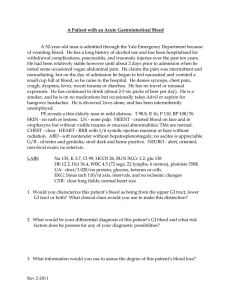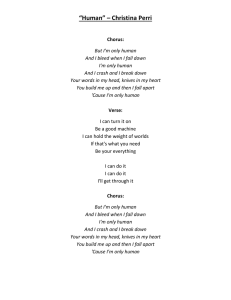F-104 Bleed Air Supply System
advertisement

Information regarding the Lockheed F-104 Starfighter F-104 Bleed Air Supply System An article published in the Zipper Magazine # 45 March-2001 Author: Country: Website: Email: Theo N.M.M. Stoelinga The Netherlands http://www.xs4all.nl/~chair chair@xs4all.nl Table of contents Table of contents................................................................................................................. 2 1. BLEED AIR SUPPLY SYSTEM ............................................................................... 3 2. SYSTEM DESCRIPTION...................................................................................... 3 3. Components description.......................................................................................... 3 Primary heat exchanger............................................................................................... 3 Bleed air ducts............................................................................................................. 4 Bleed air shutoff valve ................................................................................................ 4 Bleed air shutoff valve circuit description .................................................................. 4 Boundary layer, control-system .................................................................................. 4 Wing BLC ducts ......................................................................................................... 5 Internal Fuel Tanks Pressurization.............................................................................. 5 Air conditioning and pressurization system................................................................ 5 Windshield and canopy defogging.............................................................................. 5 Rain remover system................................................................................................... 6 Canopy seal system..................................................................................................... 6 Gun Purge Bleed Air system....................................................................................... 7 Nose Radar Pressurization system .............................................................................. 7 Camera Window Defogging System .......................................................................... 7 Anti-G suit system ...................................................................................................... 7 1. BLEED AIR SUPPLY SYSTEM 2. SYSTEM DESCRIPTION Bleed air systems are those systems, which depend on discharge air from the engine compressor for their operation. Three high-pressure air bleed ports at the engine compressor’s 17th stage are provided for this purpose. Ports at the engine eight o‘clock and four o‘clock positions (looking forward) supply air to the boundary layer control ducts at the right and left trailing edge flap. A port at the engine eleven o’clock position supplies, through a primary heat exchanger, the internal fuel tanks pressurization and the fuel transfer systems, the air condition and pressurization system, the rain remover system which keeps the left windshield panel free of rain, and, if applicable, the camera window defogging system. Air pressure forces fuel from the external tanks into the fuselage aft main fuel cell. The air condition and pressurization system also uses bleed air. A refrigeration unit in the system supplies properly conditioned air to the cockpit and electronic compartment. This insures the pilot’s comfort and cools the electronic equipment. It also pressurizes the cockpit and E-compartment. Cockpit pressurization ranges from zero to a maximum of 5 pounds per square inch (.35 kilograms per square centimetre) differential from ambient. The E-compartment pressure is regulated at a maximum differential of 2 pounds per square inch (.14 kilograms per square centimetre) below the cockpit pressure. This pressurization schedule is designed to start cockpit pressurization at an altitude of approximately 5,000 feet (1,524 meters), and to start E-compartment pressurization at an altitude of approximately 10,000 feet (3,048 meters). The rain remover supply ducts are tapped to supply the electronic compartment temperature control, canopy and electronic compartment hatch seals, windshield and canopy defogging and defrosting, gun gas purging, anti-G suit, and nose radar cooling and pressurization systems. 3. Components description Primary heat exchanger This unit is installed in the left side of the engine compartment. It cools the engine bleed air, by a three pass routing, to a nominal 550º F (288º C) for use in the air conditioning and pressurization system. A portion of this air is directed through additional lateral passes and cooled to a nominal 350º F (177º C) for use in the internal fuel tanks pressurization and the fuel transfer systems, Cooling air from the engine compartment enters the bottom of the unit and is drawn upward by aspirator action and discharged overboard through two outlets in the fuselage. Bleed air ducts Engine bleed air, for use in the forward fuselage bleed air systems, is routed from the heat exchanger to the dorsal duct and forward to the bleed air shutoff valve in the electronic compartment. The duct between the heat exchanger and the dorsal duct incorporates two flexible metal bellows. The dorsal duct utilizes rigid connections and is supported on the aft side of the bulkhead between the auxiliary fuel tank compartment and the ammunition compartment. The ducts through these compartments are shielded. A small line from the ram air inlet purges the shield in the auxiliary fuel tank compartment. Bleed air shutoff valve The bleed air shutoff valve is installed immediately upstream of the air conditioning package and the rain remover system. It is located in the aft upper right corner of the electronic compartment. The valve is motor-driven and is controlled by a switch on the pilot’s fresh air scope. The bleed air shutoff valve is open when the scoop is closed and closed when the scoop is opened. Bleed air shutoff valve circuit description The bleed air shutoff valve receives power from the No.1 emergency dc bus through the HOT AIR SHUTOFF circuit breaker in the electronic compartment junction box. When the fresh air scoop is opened, a double-pole, double-throw limit switch is mechanically actuated to direct power to the close side of the bleed air shutoff valve and to the radar cooling blower relay coil. The valve then closes to shut off bleed air supply to all systems in the forward fuselage. The radar cooling blower relay closes to energize the blower motor in the cockpit pressure regulator and the dump valve solenoid in the cockpit pressure safety valve. When the fresh air scoop is closed, the bleed air shutoff valve operates to the open position, the cockpit pressure dump valve solenoid is de-energized to close the valve, and the radar cooling blower motor is de-energized. Boundary layer, control-system The boundary layer control system provides increased lift from the wings and flaps during final approach and landing. Engine bleed air is ducted through valves to each trailing edge flap and ejected over its top surface. The energy of this jet airflow induces the main airflow over the wing to be deflected downward and thus produces a significantly greater vertical lift component, which permits a lower airplane landing speed. Engine bleed air from the two ports on the compressor 17th stage is supplied to the BLC valves. When the flaps are operated to land position, downward travel of the trailing edge flaps will cause the BLC valves to begin opening at approximately 16 to 17 degrees of flap travel (just beyond the takeoff position of 15 degrees). The valves are fully open when the flaps reach land position. When the flap control lever is set to UP or TAKEOFF position, upward travel of the flaps will cause the valves to be fully closed at the takeoff position. Wing BLC ducts The wing BLC ducts are located between the wing aft beams and the leading edge of the trailing edge flaps. The inboard end of each duct is rigidly attached, at the fuselagemating plane, to the BLC valve. Four hinges attach the duct to the upper wing skin. A series of nozzles is formed by a slot along the duct upper surface, which is divided by spacers into individual openings. The curved duct fairing controls the deflection of the airflow over the upper surface of the flap. Internal Fuel Tanks Pressurization The internal fuel tanks pressurization and fuel transfer systems utilize engine compressor 17th stage bleed air to transfer fuel from the external fuel tanks to the internal fuel tanks and to pressurize the internal fuel tanks to prevent collapse. Air conditioning and pressurization system. The air conditioning and pressurization system supplies the cockpit and electronic compartment areas with air properly conditioned for pilot comfort and electronic equipment cooling. It also simulates a near –normal atmospheric pressure environment. Engine bleed air, through the primary heat exchanger and the bleed air shutoff valve, enters the air conditioning package where it is cooled. A portion of this air is used to cool the electronic equipment and to pressurize the electronic compartment. The remainder of the cooled air is mixed with hot bypass air and used to pressurize and air condition the cockpit. The outflow air from the cockpit pressure regulator is utilized to cool the nose radar equipment. The outflow air from the electronic compartment pressure regulator is utilized to cool the camera, if applicable. Windshield and canopy defogging The defogging system is provided to prevent fogging of the windshield and canopy interior surfaces. This condition normally occurs as the airplane descends from a high to a low altitude. This is accomplished by directing small jets of warm air parallel to the transparent surfaces, thus raising the interior surface temperature. As long as the surface temperature is above the cockpit dew point, fog will not form. The system includes a defog air pressure regulator-and-shutoff valve, defog check valve, and defog air check-and-relief valve located on the air conditioning package, a defog remote controller, and the necessary ducting outlets. The left windshield panel is electrically heated. A thermal switch maintains the panel internal temperature between 90ºF (32,2º C) and 110º F (43,3º C) for the full operating temperature range of the airplane. Rain remover system The rain remover system is designed to clear the left windshield panel of rain by directing a blast of hot air across its outer surface. It includes a rain remover outlet, a shutoff valve, and a switch located on the cockpit temperature control panel. Engine bleed air is obtained immediately downstream of the bleed air shutoff valve in the electronic compartment. With the engine operating and the pilot’s fresh air scoop closed, setting the guarded switch on the cockpit temperature control panel to the RAIN REMOVER position activates the rain remover system. This opens the rain remover shutoff valve and directs bleed air pressure to the rain remover outlet, raising the nozzle to the operating position. High velocity hot air from a series of small holes in the aft face of the nozzle is directed over the windshield panel. This removes existing water and prevents additional water from reaching the windshield. When the RAIN REMOVER switch is set to OFF, bleed air pressure is removed from the nozzle and a spring in the outlet housing retracts the nozzle flush with the fuselage skin. Canopy seal system The canopy seal system is provided to seal the cockpit and electronic compartment sufficiently to permit pressurization. The system includes inflatable seals, air pressure shutoff valve, pressure regulator-and dump valve, check valve, and the necessary lines, switches, and wiring to provide a complete and controllable system. The system is pneumatically operated and electrically controlled. The canopy seals are normally deflated when the airplane is on the ground. This is due to the ground-air safety switch. As the airplane becomes airborne, the ground-air safety switch on the left main gear is actuated. This de-energizes the ground-air safety relay, which, in turn, completes the circuit to the dump valve solenoid and causes the dump valve to close. Pressure is then applied to the canopy seals, causing them to expand and to seal the compartments. The canopy seals are inflatable rubberised-fabric loops cemented into a retainer channel installed on the canopy sills. Gun Purge Bleed Air system The gun purge bleed air system furnishes engine bleed air from the rain remover duct to the gun purge system. When the trigger on the control stick is depressed, electrical power is supplied to the gun purge pressure switch and to the gun purge valve, which then opens to supply engine bleed air. Nose Radar Pressurization system The nose radar pressurization system pressurizes the transmitter and wave-guide components in the nose radar package. The system includes an absolute pressure regulator, relief valve, and dehydrator. Bleed air pressure is obtained from a connection immediately upstream of the rain remover shutoff valve. With the engine operating and the bleed air shutoff valve open (pilot’s fresh air scoop closed), bleed air pressure is supplied to the absolute pressure regulator. The regulator functions to maintain a constant output pressure. The dehydrator removes excessive moisture from the regulated air before it reaches the radar components. Should the absolute pressure regulator malfunction, the relief valve will open to protect the system. Camera Window Defogging System Group 271 airplanes incorporate a camera window defogging system utilizing bleed air. Bleed air is obtained upstream of the bleed air shutoff valve at a connection to the shrouded duct at FS 318. Anti-G suit system An anti-G suit system pressurizes certain critical parts of the pilot’s body during flight manoeuvres, which create positive G-forces in excess of 1.5Gs. Engine bleed air from the gun purge duct is routed to the anti-G valve. With the anti-G suit properly connected to the system, a positive G-force in excess of 1.5 Gs will cause the valve to open and pressurize the suit. The amount of pressure is directly proportional to the applied G-force. The anti-G valve is located outboard of the cockpit left console and adjacent to the pilots seat.


